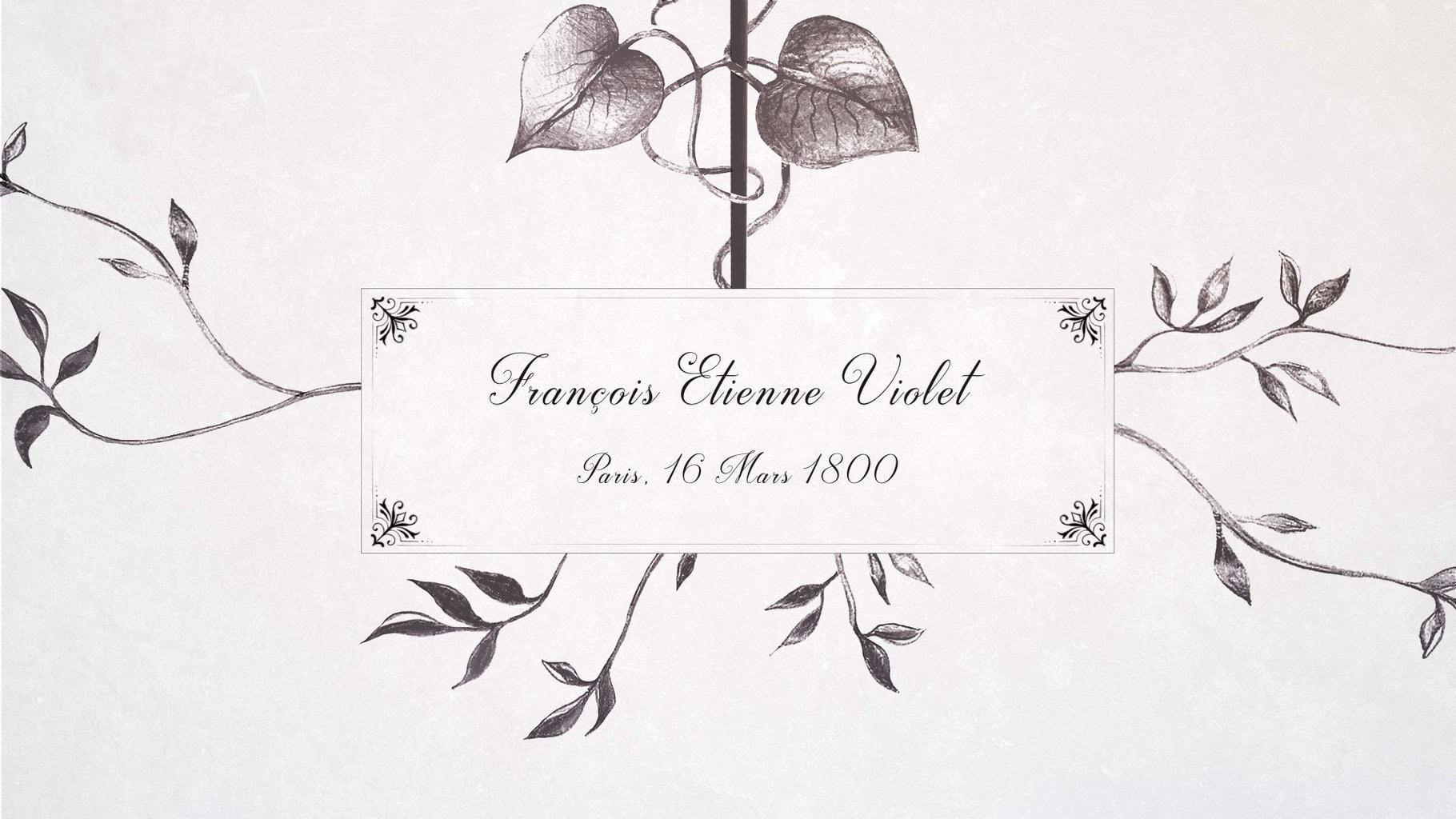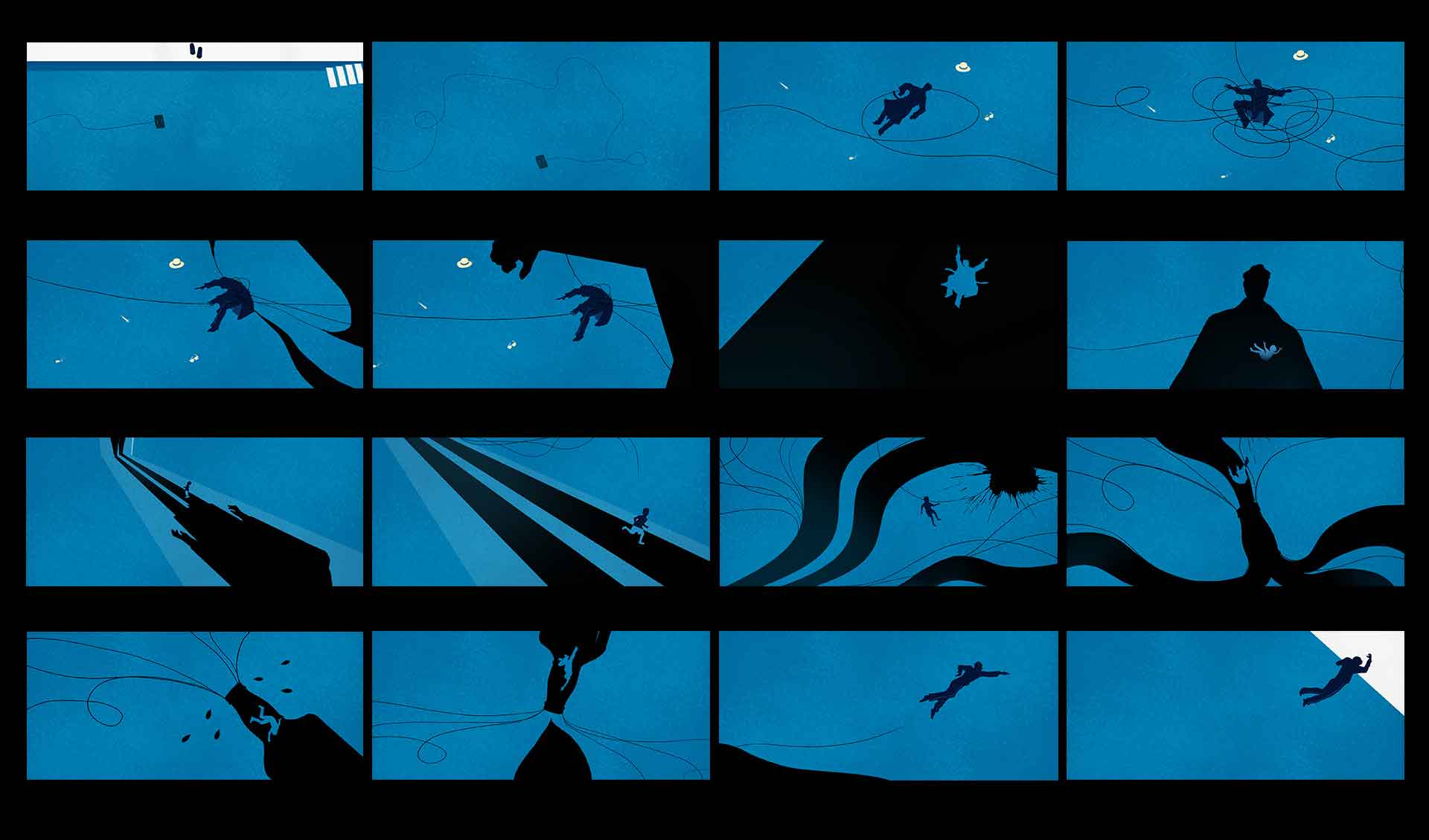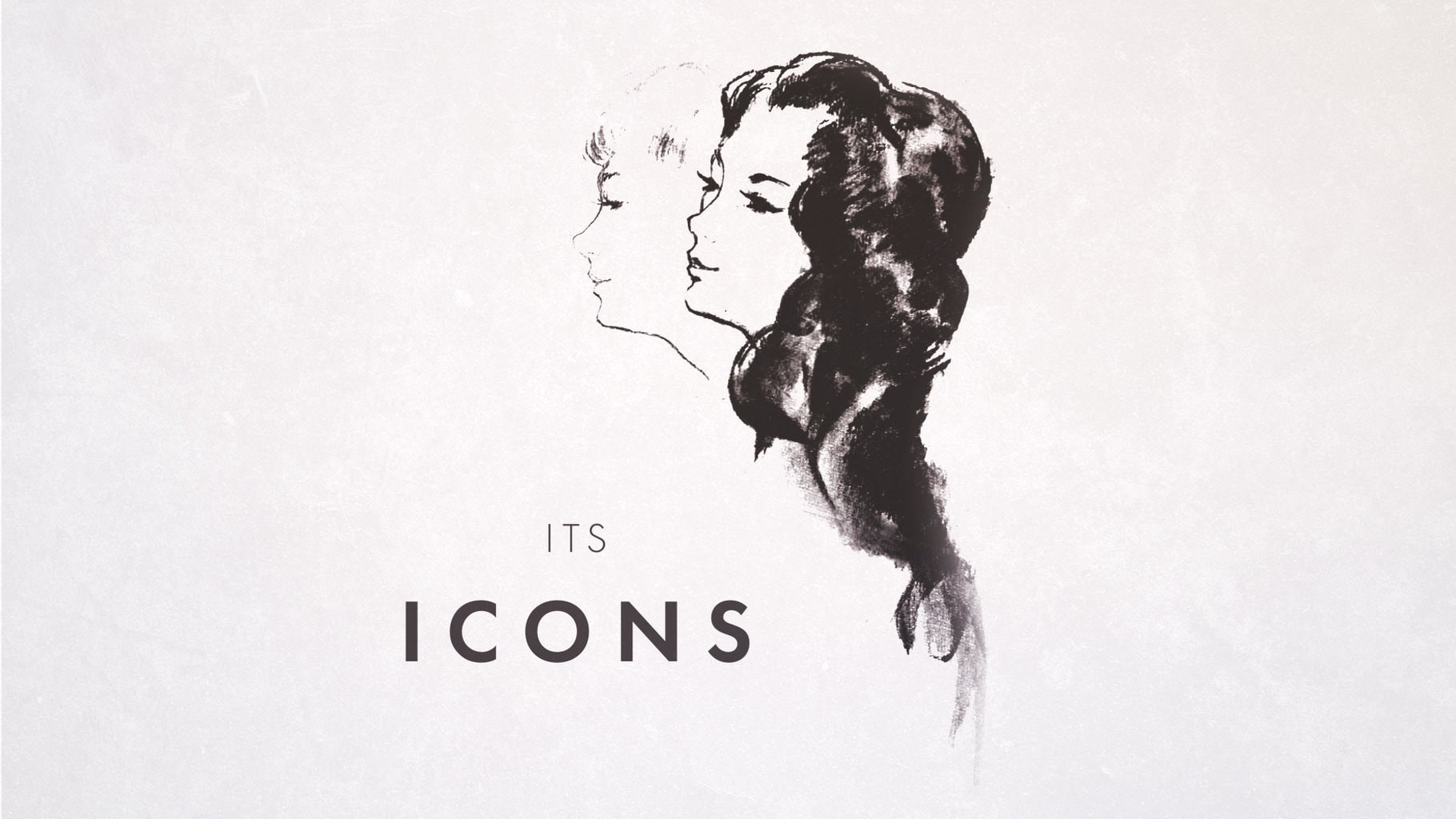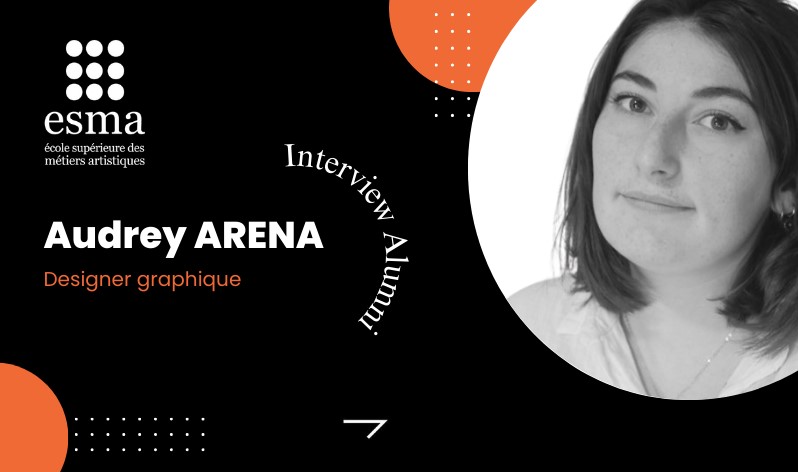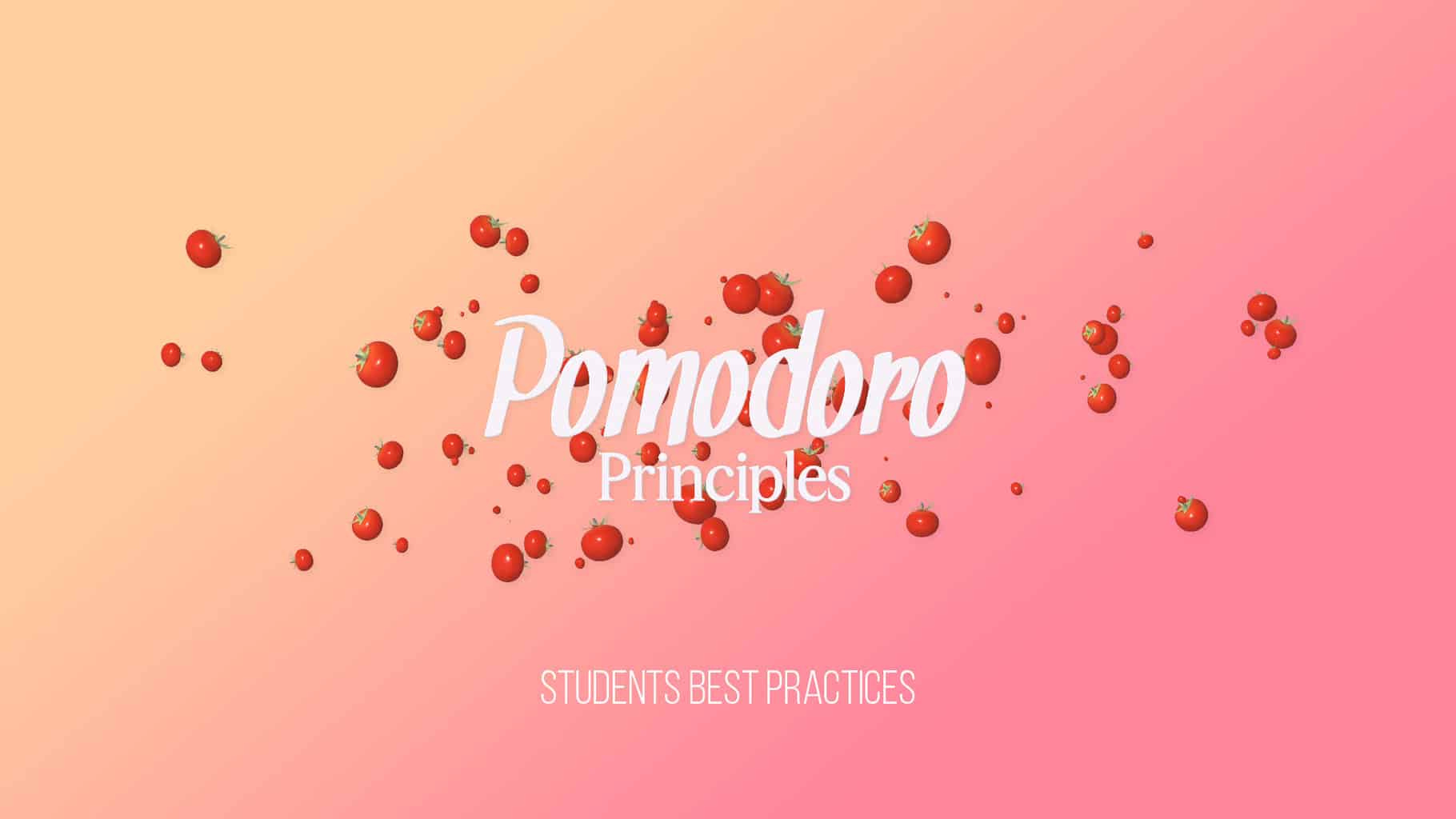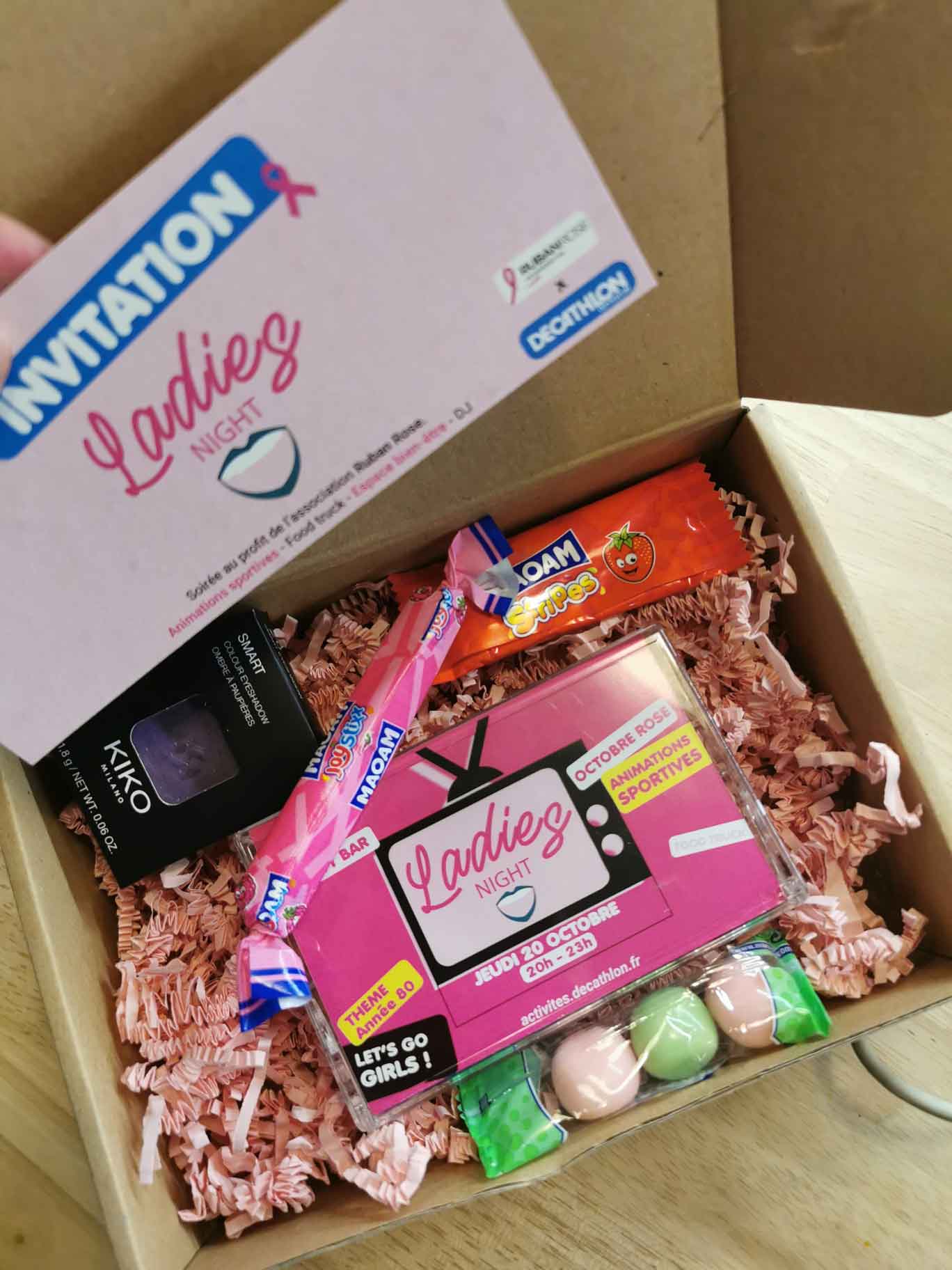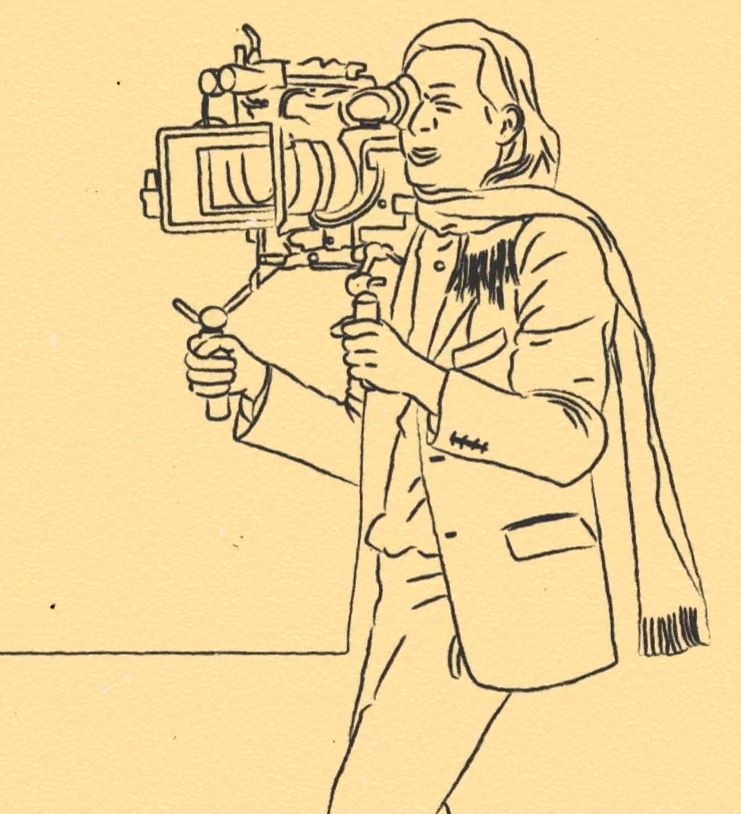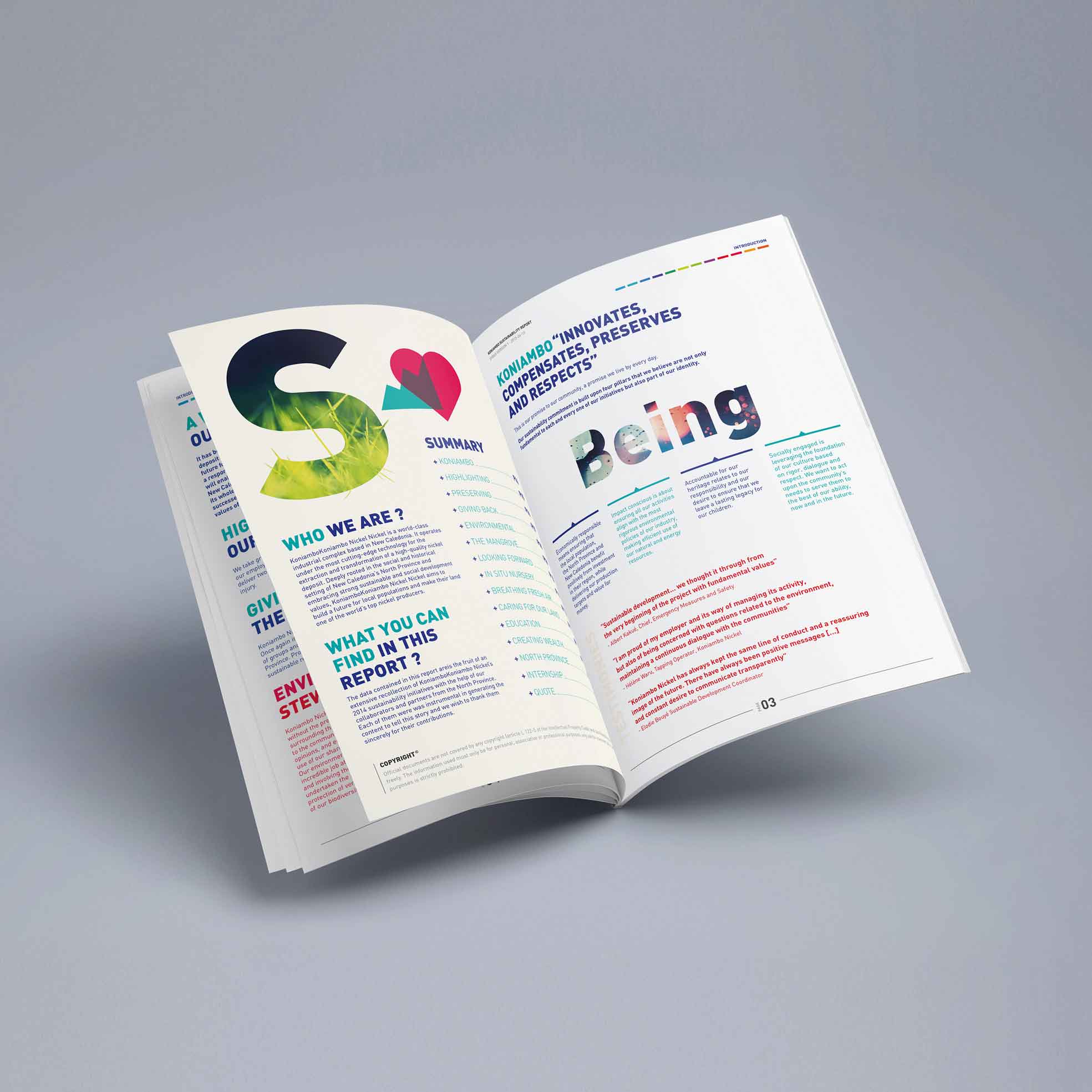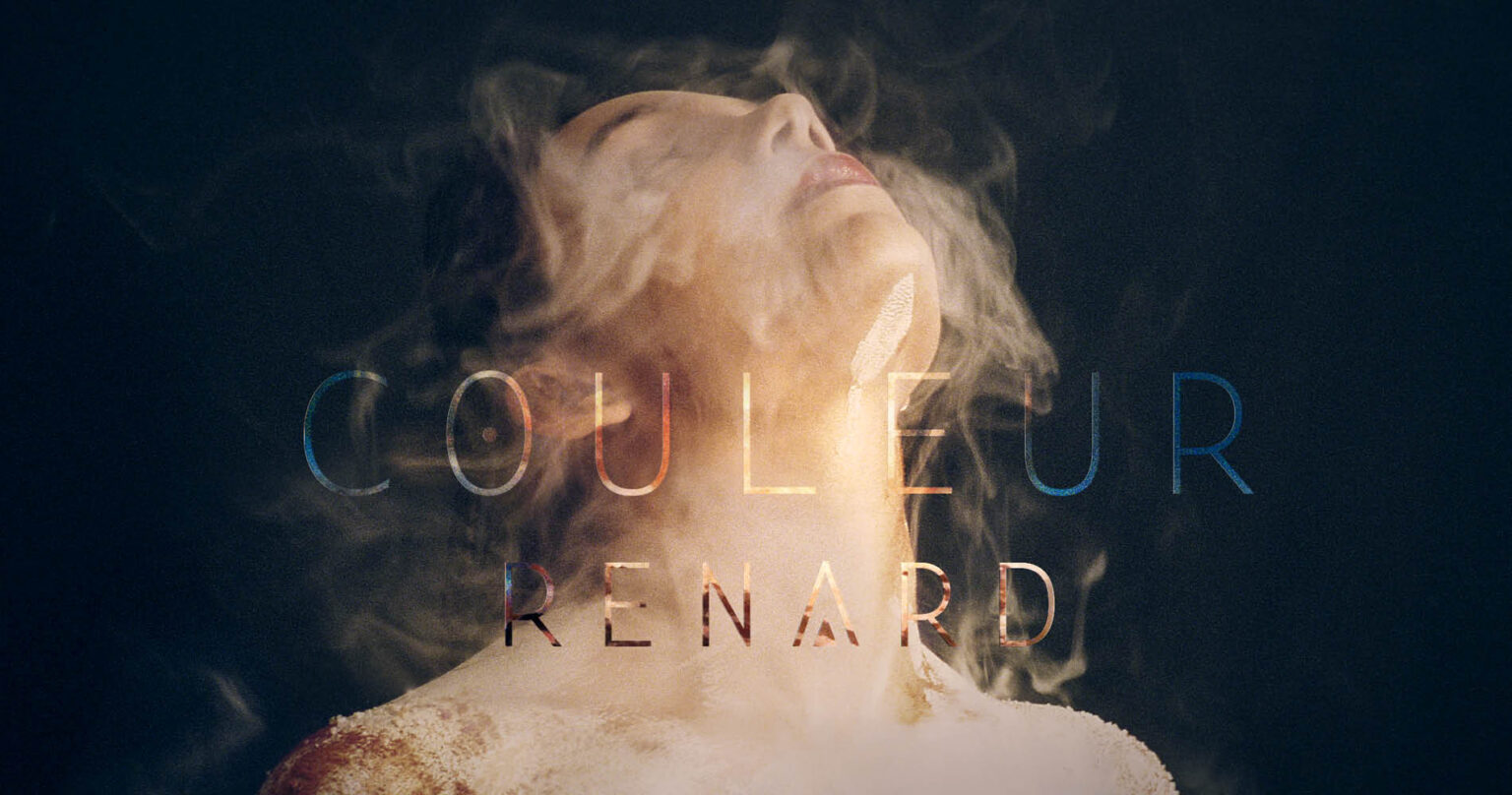
-
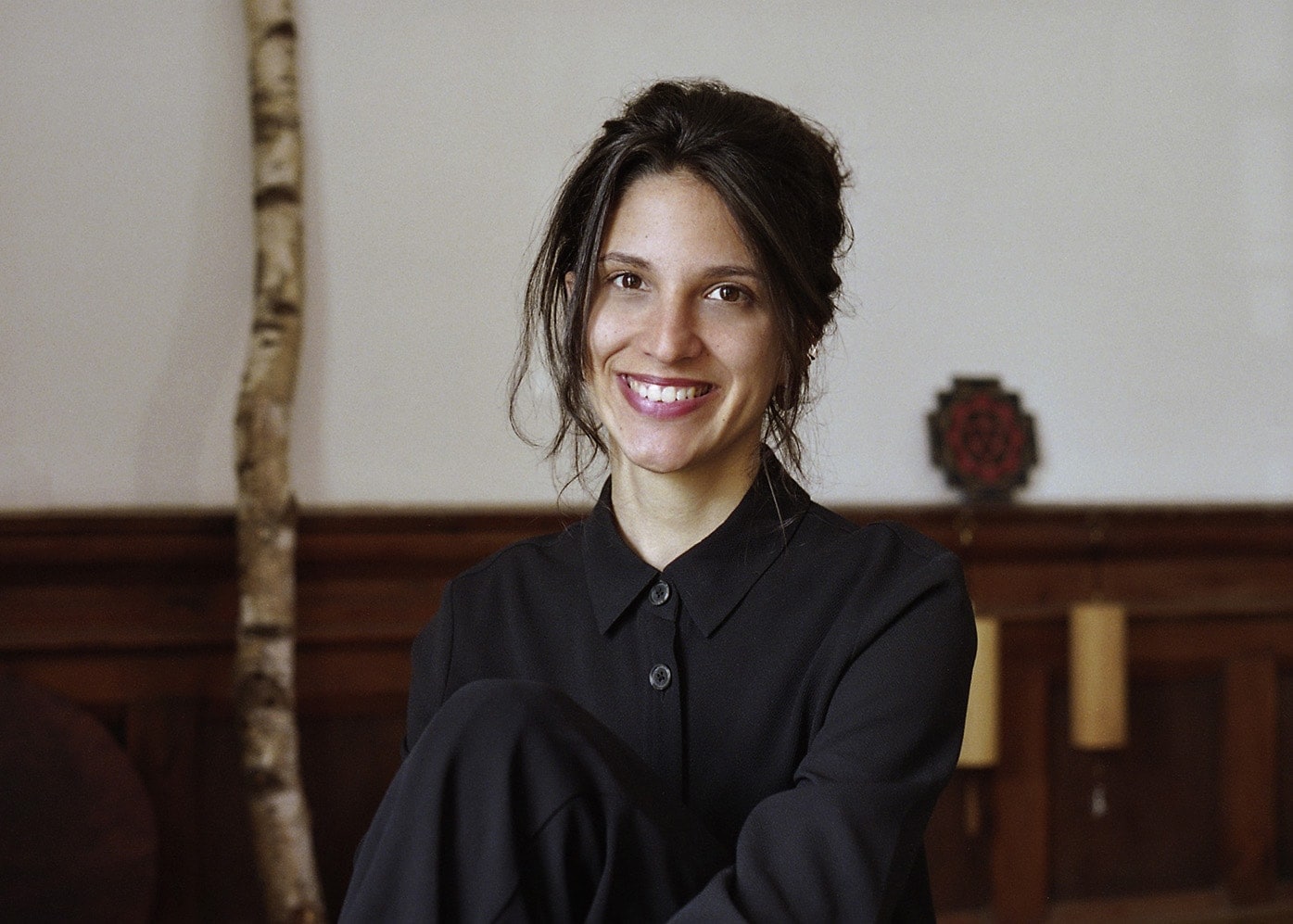
- Promotion 2017
- Training Graphic Design
- currently works at Freelance
- position Motion Designer & Art Director
Mélanie Lagoutte enrolled at ESMA in Toulouse on the Motion Graphics Design Masters course in 2017. She is a member of the first intake of this course. Bold and positive, this freelance motion designer is passionate about movement, cinema and animated video. Find out more about her.
A look back at your ESMA years
What drew you to the world of graphic design?
I was immersed in everything to do with design and images from a very early age, as I passed a baccalaureate in applied arts. After that, I went to art school and one thing led to another and I quickly got into graphic design. I felt the need for something concrete, and for me graphic design is an art that combines creation and art with concrete things.
I passed a Bac STI in applied arts, which immersed me quite early in everything to do with design and images. I then went on to study at art college and one thing led to another and I quickly turned to graphic design. After 4 years of studying art, I felt the need to return to a more practical field that would allow me to combine my artistic and creative skills. So graphic design came naturally.
That’s how I came to work as a graphic designer for a dance and theatre school. From there, I took an online course to get a certification in graphic design, but I quickly wanted to move into motion design because I wanted to work with movement. I was a bit bored with stills. That’s when I found ESMA’s Motion Graphics Design course.
I have this passion for movement, cinema and animated video.
When I moved to Toulouse, I started as a visual communications officer for a dance school. Then I took an online course to get a certification in graphic design, but I soon started going round in circles. I’m passionate about images, but also about movement and film, so still images weren’t enough for me. So I turned to motion design to add movement to my work. That’s where I found the Motion Graphics Design course at ESMA.
Why did you choose the Motion Graphics Design course and ESMA?
It was really to give meaning to what I was doing. I liked the all-round aspect of motion design, and I love the variety of fields in which it can be applied. In my career, I’ve done film trailers as well as short videos for individuals or videos for charities.
I like this multi-disciplinary approach, and when I looked at the ESMA training programme, I thought ‘that’s perfect’! The fact that I’m learning a real technique while at the same time having real art direction classes, with a process and storyboarding classes… Honestly, it’s a rich experience and that’s what gives my work breadth.
What have you gained from the course?
Apart from the skills I’ve acquired, what I’ll always remember is the work methodology. For that reason alone, I’m really glad I took the course! This methodology really makes a difference in the industry.
In England, there are a lot of self-taught motion designers and I quickly realised that compared to them, I had the advantage of having a technical AND creative methodology. Whatever our projects, at ESMA we always managed to link the technical methodology to the creative methodology. I find that very instructive and that’s what I remember most about the course. Throughout the year I learnt a real creative process, with a correlation between art and technique that I think is essential to understand. I come across a lot of self-taught people who are often one or the other, but rarely both.
Was there a subject you particularly liked?
Everything creative, particularly the art direction classes with Edouard Marpeau.
Did the esma course help you find a job after you graduated?
Well, yes and no.
No, because in England people don’t know about the school, so saying I’d done ESMA didn’t give me any more of an advantage than anyone else.
But yes, because I think that everything I learnt there and the portfolio I produced helped me to find contracts. The projects I produced at school helped me to land my first contracts because that’s what made up my portfolio and, at the beginning, that’s what I sent to the companies I was canvassing.
did you have a clear idea of what you wanted to do when you left the course? What did you want to do?
I knew I wanted to go freelance, so that’s what I did as soon as I arrived in London.
I absolutely wanted to work in a post-production studio to make film and series trailers, and that’s really what I set out to do when I arrived in London. It was the first time I’d heard of motion design. It was the first time I’d heard of motion design, so I remember thinking to myself when we made one at ESMA, “That’s why I’m doing motion design!
I like the very creative side and the freedom of expression that credits allow. There’s some really interesting thinking behind them, because you have to give the viewer the identity of the film, show them what they’re going to find, but without saying too much. It’s subtle, and I think it’s brilliant and fascinating.
How did your immersion into the professional world go when you left the course?
As soon as I finished ESMA, I went to live in London. It was a bit of a leap, but as I leafed through the adverts I quickly realised that there were lots of opportunities. I love travelling and I wanted to experience life in another country. I don’t regret my choice, because in England you can move up the career ladder very quickly.
My first interview in London was with a video production studio that was looking for someone for a two-month assignment. It suited me very well. At the time, my English was really bad and, to my great surprise, they took me on anyway. My work spoke for me and they were impressed by my approach to motion design. That first contract was really hard for me, because of my poor level of English, but looking back, I think it’s not a bad thing that I went through it, because it’s what enabled me to be operational afterwards. In fact, that first contract was essential because it toughened me up and enabled me to be up to speed in English for the second project, which was very close to my heart because it was for film credits. I really have this ability to learn on the job. I need to confront reality to shake things up and assimilate things.
I sent around a hundred emails offering my help, with my portfolio, to studios I liked, then I followed them up until one of them called me for an assignment.
Apart from the quality of the portfolio, I think it’s also a question of timing and motivation. The idea is to create a work opportunity by arriving at a time when they have too much work and need extra help, and so… a freelancer! That’s what happened to me, I arrived just as the credits were being produced and they were swamped. I jumped right in and it was just too good. So I ended up at Momoco where I was able to work on the credits for the series Narcos Mexico. At the beginning, I inevitably had a few small tasks, but it was my first time in the industry, so I was really happy. And after that it can go really fast, if you’re hard-working and give it your all.
My experience at Momoco helped me a lot, because the business is small and it’s a fairly well-known studio in London, so I was recommended to another studio for whom I worked immediately afterwards and so on… I worked for two and a half years like that, without needing to make too many follow-ups. I often worked for the same studios who would call me for a new project, and when I finished one, the other would ask me. After a while, the pace slowed down again, but that’s the principle of freelancing, there are always periods when things are a bit slower. So I started working again in other areas because I thought it was a good opportunity to discover new things. It’s allowed me to work for luxury brands like Maison Violet, Yves Saint-Laurent and, more recently, Lancôme.
I’ve been in business for 4 years now and I didn’t experience any major difficulties when I started up. It grew right away. I may have been lucky, but I think that’s also partly due to the Anglo-Saxon mindset, which is different. If you’re competent and motivated, you’re very quickly rewarded. They assign tasks and projects primarily on the basis of your skills/qualities, not your experience. They are also quick to place their trust in you which, on the one hand, allows you to progress very quickly but, on the other hand, can put pressure on you because you always have to be up to speed with what they ask of you. So if you’re motivated and good at what you do, things can move very quickly. Around me, a lot of people are leads or seniors and are managing a team after just 3-4 years’ experience.
Your career path
You’re a freelancer now. When you left school, weren’t you worried about the lack of recognition, confidence or network?
It goes with my personality. I started working when I was 17, so I quickly realised what it was like to be an employee, working in a team. And I’ve always had this ambition to set up my own business, to be my own boss.
I like the idea of managing my time and my clients, and saying no to a project if it doesn’t really suit me. Today I’ve developed my profile so that I can choose my projects, because that’s where I’m at my best. I don’t accept a project if it doesn’t feel right.
I think it’s important to desacralise freelancing, because a lot of people are afraid of it, but in fact it’s just another way of doing things. Once you’ve understood the process, the methodology of freelancing, it can be just as simple as being an employee. The most important thing is to understand what suits you, what meets your needs and who you are.
I already had some professional experience before school, I didn’t go through the post-baccalaureate system, so I left feeling pretty confident. But in any case, these aren’t really things that scare me in the sense that I always tell myself that I’m bound to land on my feet at some point. I’m not afraid of taking risks, I place my trust in the fact that one day or another my efforts will pay off. On that basis, there’s no reason why it shouldn’t work as long as I give it my all… and in the worst case, if it doesn’t work, I’ll find a ‘back-up’ solution.
You shouldn’t be afraid, in the beginning, of coming across jobs that you don’t really want to do. You have to be patient and accept that, on your first few contracts, you’re not necessarily going to be doing the things you’ve always dreamed of doing. But that’s the starting point, it’s the foundation you need for what’s to come, and once you’ve got the ball rolling there’s no stopping it. Personally, it took me two weeks to find my first assignment and two months to start working where I really wanted to be. After that, there’s no secret: it’s a lot of hard work and reflection, so you never lose sight of your objective.
Whether it’s a network, confidence or recognition, everything is built up over time and with experience.
From my point of view, if things are done in the right order and in a considered way, there’s very little chance that it won’t work. The idea is to make sure you have solid foundations before trying to climb to the top of the building.
What advantages do you find in being based in London for your professional practice?
The opportunities I wouldn’t have had anywhere else. The fact that there are a lot of post-production studios in London has enabled me to work quickly on film credits. What I also love is the open-mindedness that means that even if you’re just starting out in the business, they’ll let you express yourself and listen to you. They take into account your personal abilities and desires as well as your professional skills. It’s a way of working that interests me a lot and suits me. I don’t think I could have achieved the status I have today after just 4 years’ experience in France.
What’s more, motion design, although it’s starting to evolve, is much more established in England than in France, which is a significant advantage. Motion design is an integral part of any studio, the market is very open and there are many areas of application.
What do you love about being a motion designer?
I really enjoy pre-production, creating storyboards and coming up with ideas. I like dissecting the brief that people give me to understand what they need and come up with the creative that’s most in line with that need. There’s always some research to do on the side, which is always fun, to understand the DNA of the company or to understand why they want to make this video, what identity they’re going to need in addition to their own, what type of animation they need to use to send the right message. All these issues make my job interesting and that’s what I like.
Where I get the most pleasure is when people put their trust in me and let me carry out the project from start to finish. It’s also more inspiring for me because I know that I’ll be able to manage my idea from brief to completion as I see fit, so I can develop my idea in its entirety without feeling frustrated only doing the animation or storyboarding…
In your work, is there a signature, a “Mélanie” touch?
Many people tell me that there is, but it’s always difficult to say “yes, I have my own style”. But it’s true that what keeps coming back is texture. I love texturing my projects, so that there’s substance and emotion. I think that’s something that characterises my work. And then, perhaps, there’s the traditional side, in the sense that I don’t hesitate to use inks, to do everything by hand, only to scan and rework it afterwards. People often come to see me for that, for that hand-made, textured side.
Is there a project you’re particularly proud of that you’d like to share with us?
Save the arches! That’s the one that comes up the most, it was an association project to defend a cause. It’s the one that brought me the most recognition in my profession and even though it’s already two years old, I still love it just as much. Even today, I’m often asked to make a video in this style. This project is 100% me.
When I was told about the project, I did it wholeheartedly because I liked the cause. So I did a lot more than they asked, but because I really wanted to send what I felt about the cause. And even though it’s a small cause, it was important, I thought it was great. I also think that this video touches people, and that’s part of the reason why I make videos. When I succeed in touching people with what I do, I’ve won everything. It gives meaning to what I do.
In conclusion
Any future projects?
In September, I’ll probably be teaming up with Nicolas Deboos, a former ESMA student with whom I did a Masters in Motion Graphics Design. We often have the same clients, we’re used to working together and we complement each other well. So we decided to join forces.
How do you see yourself in a few years’ time?
This project will determine the future quite a lot, but I also have another business that I’m developing on the side, which has nothing to do with motion design. For the moment, it’s still a bit unclear how I’ll manage the two activities, but I know I don’t want to choose between them. Ideally, I’d love to have this balance between my work as a motion designer and this other activity. I like doing several things at the same time, it’s part of who I am.
What advice would you give to current and future motion design students?
You have to believe in your projects, you can’t underestimate your ideas and ambitions, even if people around you tell you that it’s hard to achieve what you want. You are the only master of the game; you define the rules and the limits.
The most important thing for me is to be in tune with yourself and to make your choices according to your needs and desires and not according to others or the world around you. And if at the end of the day you realise that you’ve taken the wrong road, it’s no big deal! Just stop, think and get back on track.
There’s nothing wrong with starting again, failing or making mistakes (at all levels). On the contrary, it’s a way of learning, understanding and evolving, so that you can define and redefine your life path over and over again as you evolve. If one project doesn’t work out, there will be others. You shouldn’t be afraid of failure, because it never really is.

